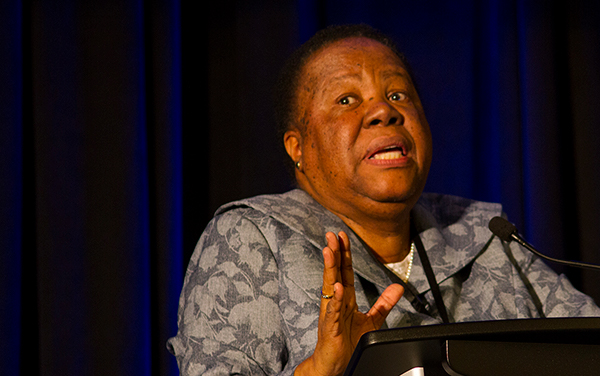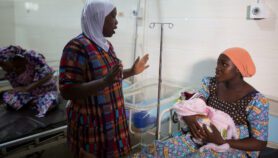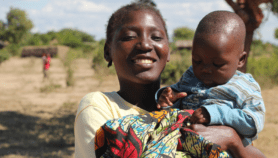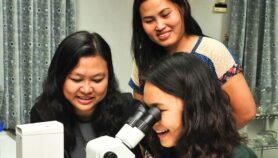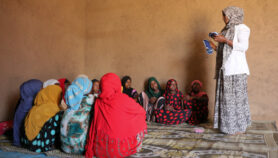By: Lisbeth Fog
Send to a friend
The details you provide on this page will not be used to send unsolicited email, and will not be sold to a 3rd party. See privacy policy.
Naledi Pandor has served as South Africa’s science and technology minister since 2009. During her term, she chose to focus her efforts on two fronts: on being a leading partner in the Square Kilometer Array (SKA), a EUR11.6 million project involving 25 countries; and on fighting HIV/AIDS, which affects an estimated 12 per cent of South Africa’s population who are HIV-positive.
Pandor spoke in front of more than 1400 science journalists at the 10th World Conference of Science Journalism, held this month (October 26-30) in San Francisco, United States. She gives the impression of a leader who means what she says, and her voice did not falter as she described efforts to make science a leading force in her country and across Africa.
SKA aims to build a network of over 3.000 telescopes across Africa and Australia to “form the biggest radio telescope in the world”, say says, adding that there are already 500 research groups from 45 countries that have booked to use the new precursor or prototype telescopes once they are completed.
She is proud of it. But why focus on this, when South Africa has more pressing problems?
“That was the challenge we had initially,” she says. “But as the project has taken off, what we have as part of it is a human capital development program. There is a strong scholarship initiative, and then we link that with other African countries.”
SciDev.Net caught up with Pandor in San Francisco to find out more about the benefits from SKA, and her other priorities for science in South Africa.
How have young people benefited from SKA?
Schools that are close to the site where the telescope will be built have benefited from science laboratories being provided for them, and from training for science and math teachers. So young people from those schools have been offered scholarships to study engineering and science at the university. We have included the community very much [in this project].
Are there any other sectors that have benefited?
Certainly new infrastructure [is one]. There are roads [that have been] built in remote sites because the radio telescope has to be in an area that is free of radio interference. New energy provision [is another]. We have had to provide electricity in the areas, but in addition we decided to use renewable energy, so we provide to the local community access to a renewable resource. It has been quite a challenge.
Is there anything that has changed as a result of SKA in the way science is done in South Africa?
The project alters the dynamic between Africa and scientists in the rest of the world ‒ because suddenly you are coming to Africa to do high-level research, you are not having scientists leaving Africa to do research elsewhere. [It is] a totally different relationship between science and the African continent.
How have you addressed gender issues in science?
We have a number of incentives that seek to fund women in research. What we have done is issue a policy directive to grant-making institutions that at least 60 per cent of the grant funding must go to women; currently it is less than 40 per cent.
I discovered that we are good at making policy, but we don’t monitor [the results] sufficiently.
We had a huge programme to establish research Chairs [in public universities]; and on looking at the numbers, I discovered that less than 23 per cent of the appointees were female. So we had to intervene; when we had funding for more Chairs, all were advertised as available only to women scientists. We got more applicants than the Chairs available ‒ which just signalled that if we don’t have a gender lens, we will not achieve gender equity.
It’s important that you insert these objectives into whatever policies you have, otherwise you will be doing a lot of things but you will not be achieving change. We are very good at the rhetoric, we all say the right things, but translating the rhetoric into real action is often the problem.
This Q&A was edited for brevity and clarity.


